
In Los Angeles, Akua Shabaka and her mother, Rebecca Henry, connect to a video call. They are similarly illuminated by window light, despite joining from different locations: Henry sits in her working studio, while Shabaka appears on-screen from a cozy alcove. They have matching sets of warm eyes. For nearly 10 years, the two have been professional partners in the development of their heritage label, House of Aama. Beyond the familial bond, the duo shares deliberateness in their sartorial practice—they are crafting materiality for unsung Americana.
House of Aama is Henry and Shabaka’s lifestyle storytelling brand; its Fall/Winter 2024 collection was shown at New York Fashion Week this past February. In that celebrated showing, the designers and co–creative directors revealed more than 30 new looks, in an intimate downtown jazz club presentation honoring their L.A. and familial roots.
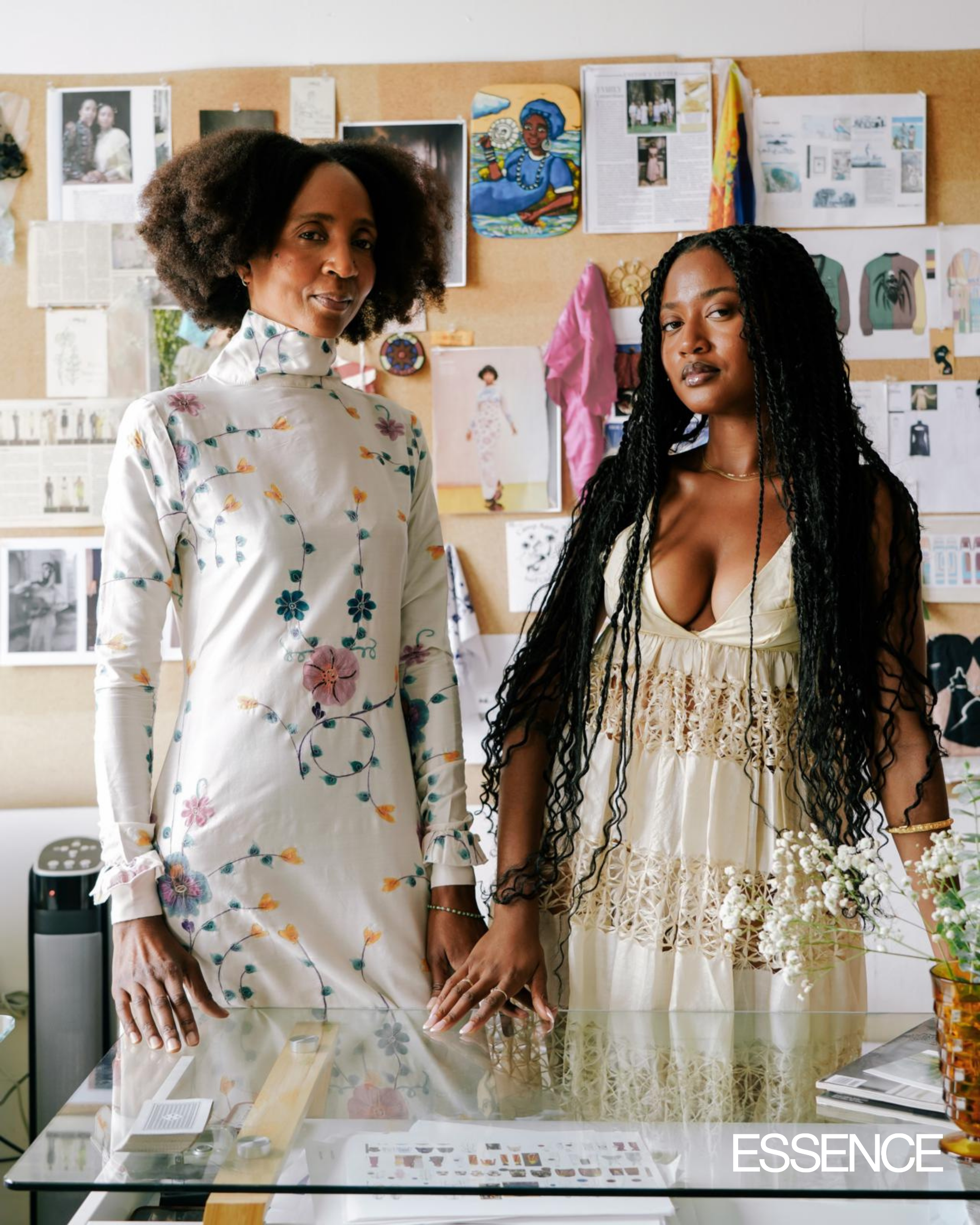
“In the past two collections, we’ve really been in the world of my paternal legacy,” Shabaka reflects. She is referring to her father, and Henry’s late husband, Jamaiel Shabaka—a prolific avant-jazz horn player who passed away in 2021. This latest era in House of Aama’s story is very much rooted in a family legacy of art and craftsmanship, even as it shines a light on the fusionist Pan-African ethos that bonded Henry and her husband.
The Land Of The Rising Sun, released in 1988, is one of the most frequently referenced works by the elder Shabaka. The highly improvised album melds traditional woodwind jazz musicality with Yoruba and other Afro-Cuban sounds, to transform an already culturally reflexive genre into something even more dynamic. This source music reflects the textiles that inspired mother and daughter to embark on a cohesive design approach. “I’ve always been a person who mixed materials—new and vintage, and heirlooms with things I sewed myself,” says Henry, explaining how she continued the cycle of valuing the family’s artistic heritage through clothes and their construction.
House of Aama, particularly in its earliest collections, relied on the Henry family’s postbellum history and mystical tales of the southern United States. “The connection to craftsmanship comes from the fact that both of my parents are southerners,” says Henry. “My father is from South Carolina, my mom is from Louisiana—and I was in those places for a significant amount of time as a child. My grandfather had a farm in Shreveport, Louisiana, and every single summer my cousins from Detroit would meet us there.” During these childhood exchanges, Henry observed her family’s dressmaking tradition, by watching her mother and aunts go to fabric stores and hand-create their summer wardrobes. “It was important that you be able to express yourself with something that you made for yourself,” she says.
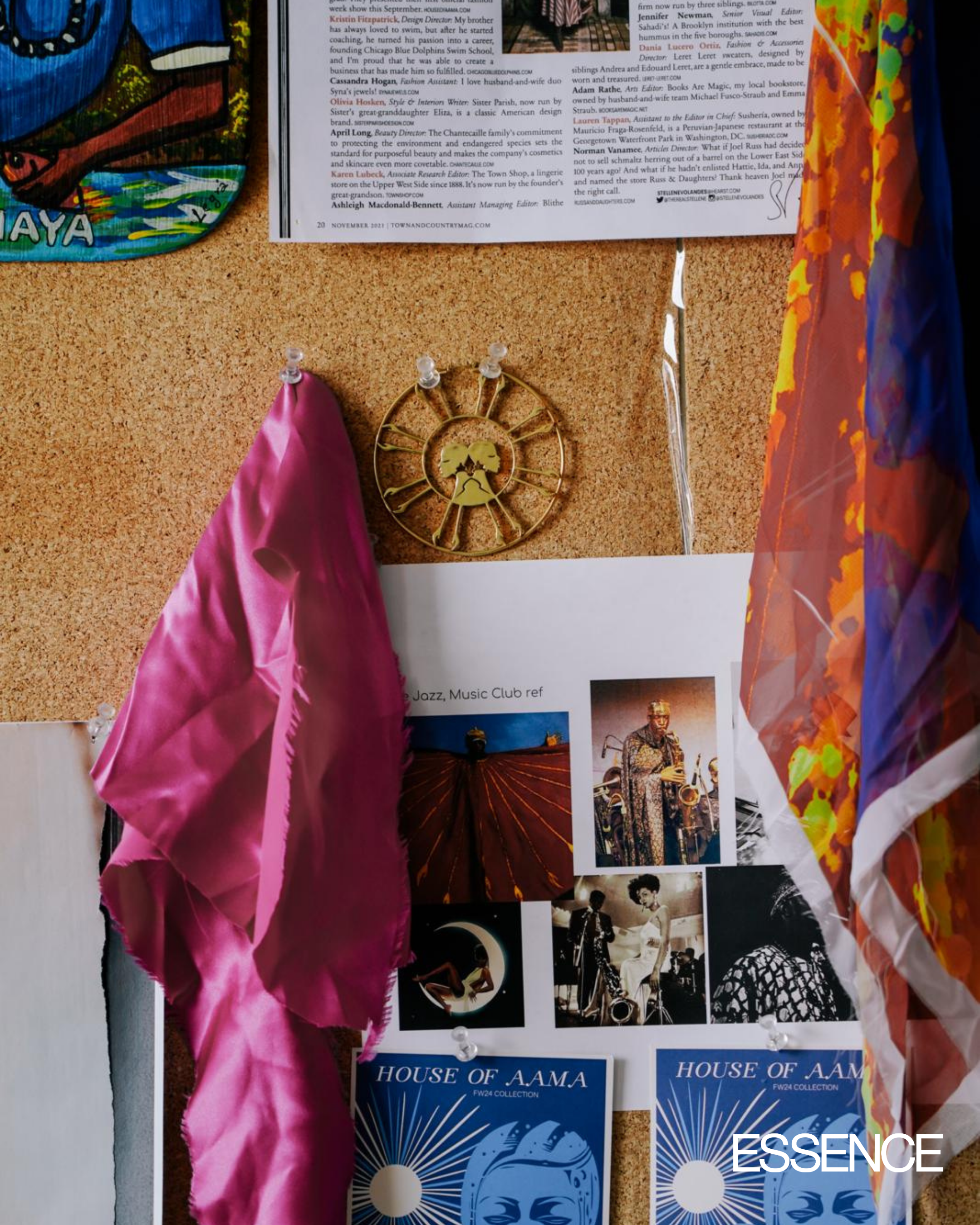
This practical inheritance is tied to Henry’s understanding of southernness and Black culture at a visceral level. She carried this with her as she grew up and later settled in Los Angeles, where she practiced as an attorney for many years and raised her daughter. As the younger Shabaka came of age, she closely held her maternal Louisiana and coastal Carolina lineage, alongside her father’s Los Angeles and Caribbean roots. Jamaiel Shabaka’s professional journey as a jazz artist, DJ and educator was his own practice in cultural remembrance, engaging the range of African-Cuban musical traditions across multiple instruments. The Shabakas, a longtime L.A. family, retain their connection to the Compton, Watts and Long Beach communities to this day.
Informed by her parents’ creative influences, Shabaka began her own art by engaging with physical and oratory archives reflecting her heritage. Most recently, her family’s part in the emergence of a unique slice of L.A. jazz history served as the inspiration from which the House of Aama’s Fall/Winter 2024 collection was born.
Tasked with finding new ways to engage with legacy, Henry and Shabaka followed the stories that found their way to them organically—including the thread of Jamaiel Shabaka’s walking patterns in Leimert Park and Central Avenue. After inheriting and exploring her father’s archives, Shabaka discovered the depth of a localized artistic movement that has global resonances—not just in the music world, but in her and her mother’s work today. “We landed at the Free Jazz Movement,” says Henry. “Ornette Coleman, Billy Higgins, who I knew, were stories that were presented to us—and so we really brought everything down and focused in on this particular slice of L.A. jazz history.”
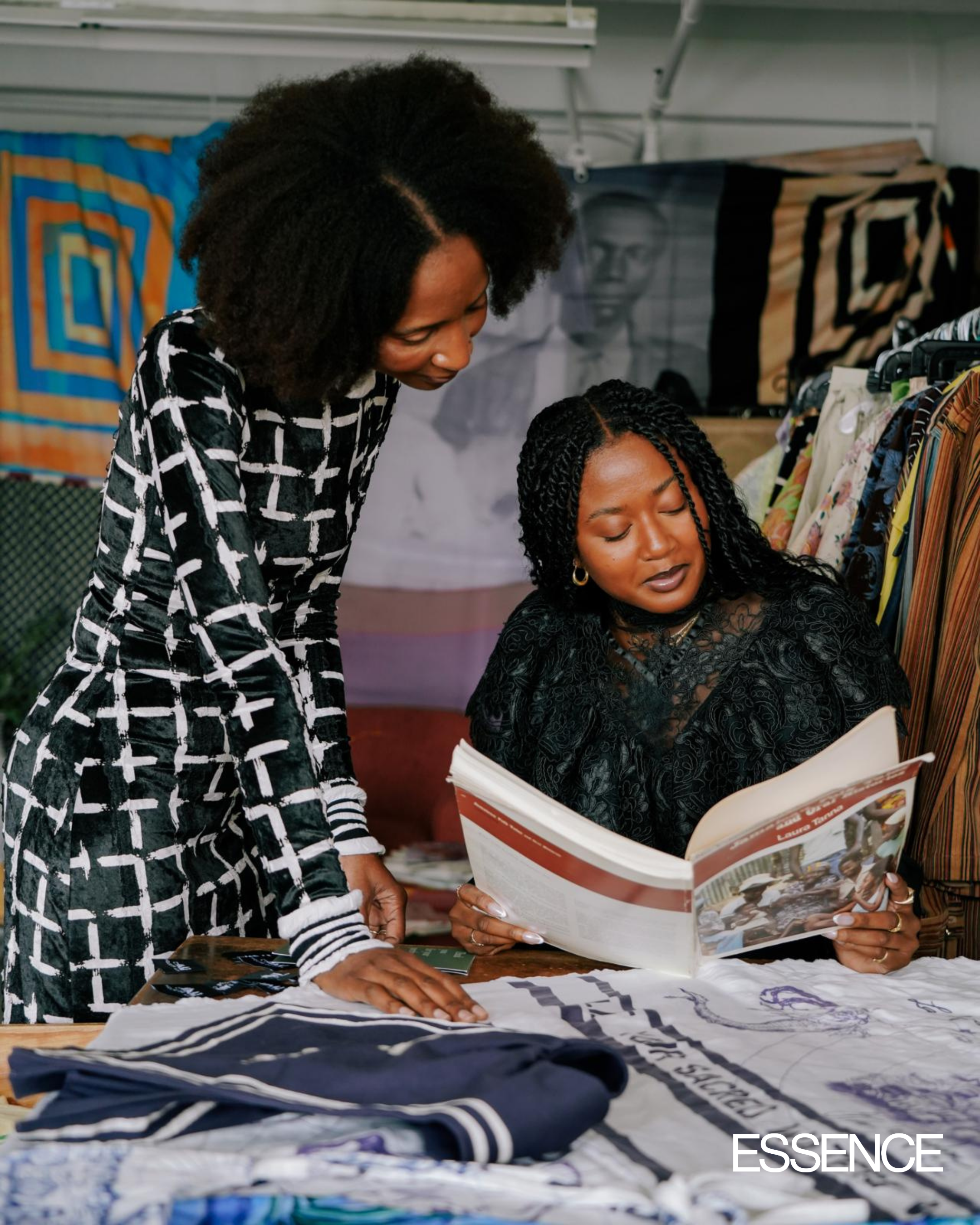
The Free Jazz Movement started in the avant-garde 1950s and evolved into the buoyant thought-revolution of the late 20th century. Closely linked to the anti-war and Black Power consciousness of that time, this musical reframing celebrated collective improvisation and nontraditional forms, in order to shift the boundaries of what was considered jazz. Many of the luminaries of this period, themselves friends and mentors of the late Mr. Shabaka, fostered community in jam sessions, rehearsals and performances, at historically Black Los Angeles cultural centers in the Watts and Leimert Park areas.
“I spent a lot of time between the past collection and this collection, talking to a lot of my family members, who were very active during these times,” Shabaka recalls. She notes how her aunts enlightened her on the family’s connection to this prolific movement—and through an accompanying study of archival images, she was able to visualize what that period meant for her parents’ past and her artistic present. “It’s been really interesting exploring the music and understanding the spirituality of the music—understanding the desire for Black people at that time to really look at themselves, beyond just their current circumstance, and using music as a way to do that,” she says. Letting the story guide her, she inadvertently tapped into the same creative expansion that had led her paternal family for generations.
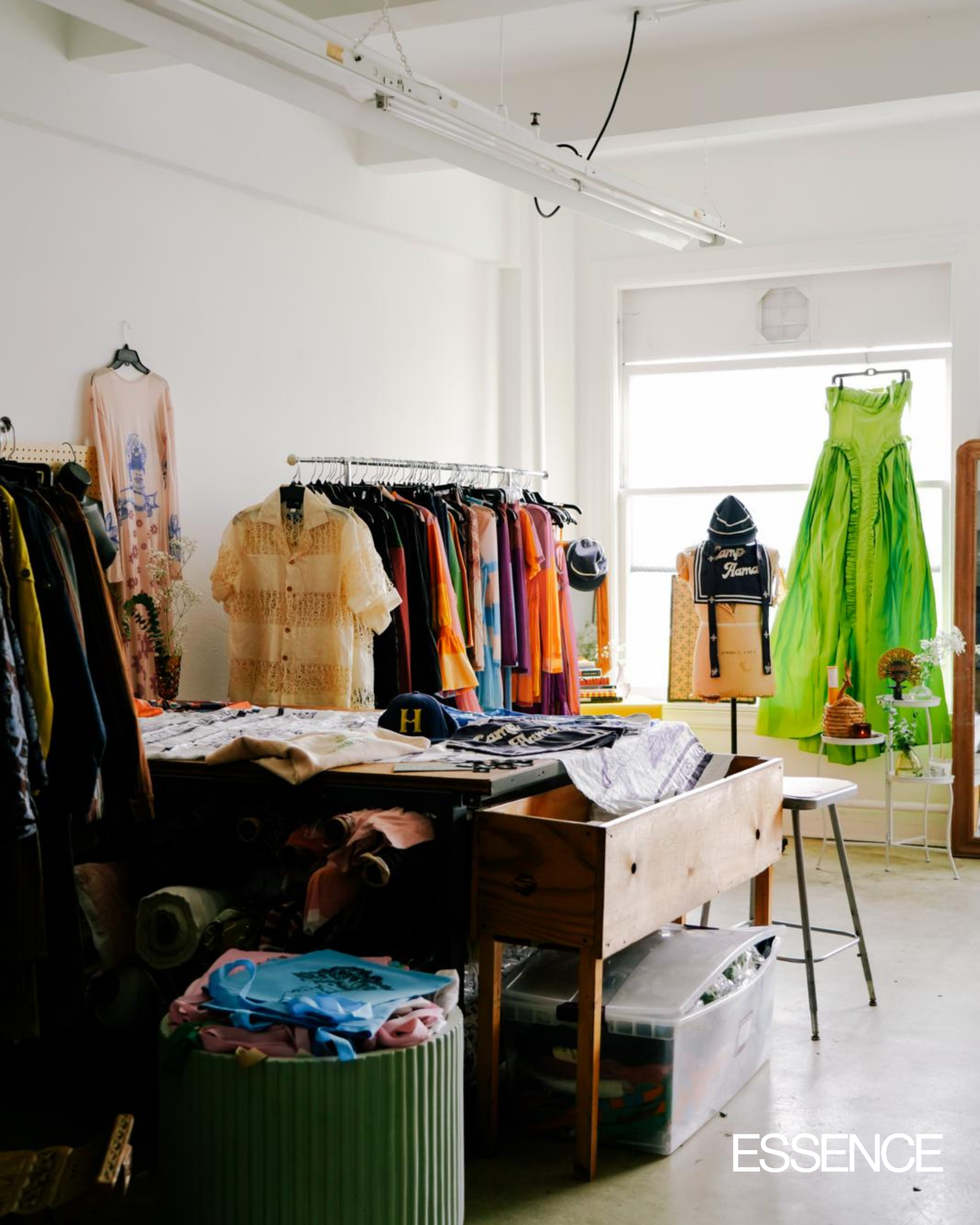
In the Fall/ Winter 2024 presentation, entitled “Sun Records,” audiences got to witness the various hues that reflect the light and warmth of this era. Caftans and semi-sheer maxi dresses moved down the walkway, immediately brightening the otherwise dimly lit speakeasy. These pieces, in various tones of gold, orange and royal blue, energized all present on that gloomy day in February. For a moment, the energy of 1970s L.A. was in a New York City cellar.
House of Aama, as a narrative-driven label, creates collections based on storytelling cohesion from previous seasons. The source inspiration—family history and Black American journeys—is vast and always ripe for a new take, as demonstrated by the brand’s sequential releases. The label’s 2017 “Bloodroot” birthed another and then another line evoking the poetry of African-American folklore: “Salt Water” for Spring/Summer 2022, and the “Parable” capsule in 2023, among others. In each iteration, Henry and Shabaka identify a historical site of kinship and reimagine it in a surrealist contemporary mode. In 2021, the pair arrived at “Camp Aama,” an imagining of a sun-kissed community gathering place with the makings of classic summer-camp aesthetics. It is an ode to Black freedom held at a mythical resort that reemerges from this most recent collection, and it will likely be expanded upon visually in future iterations of the clothes.
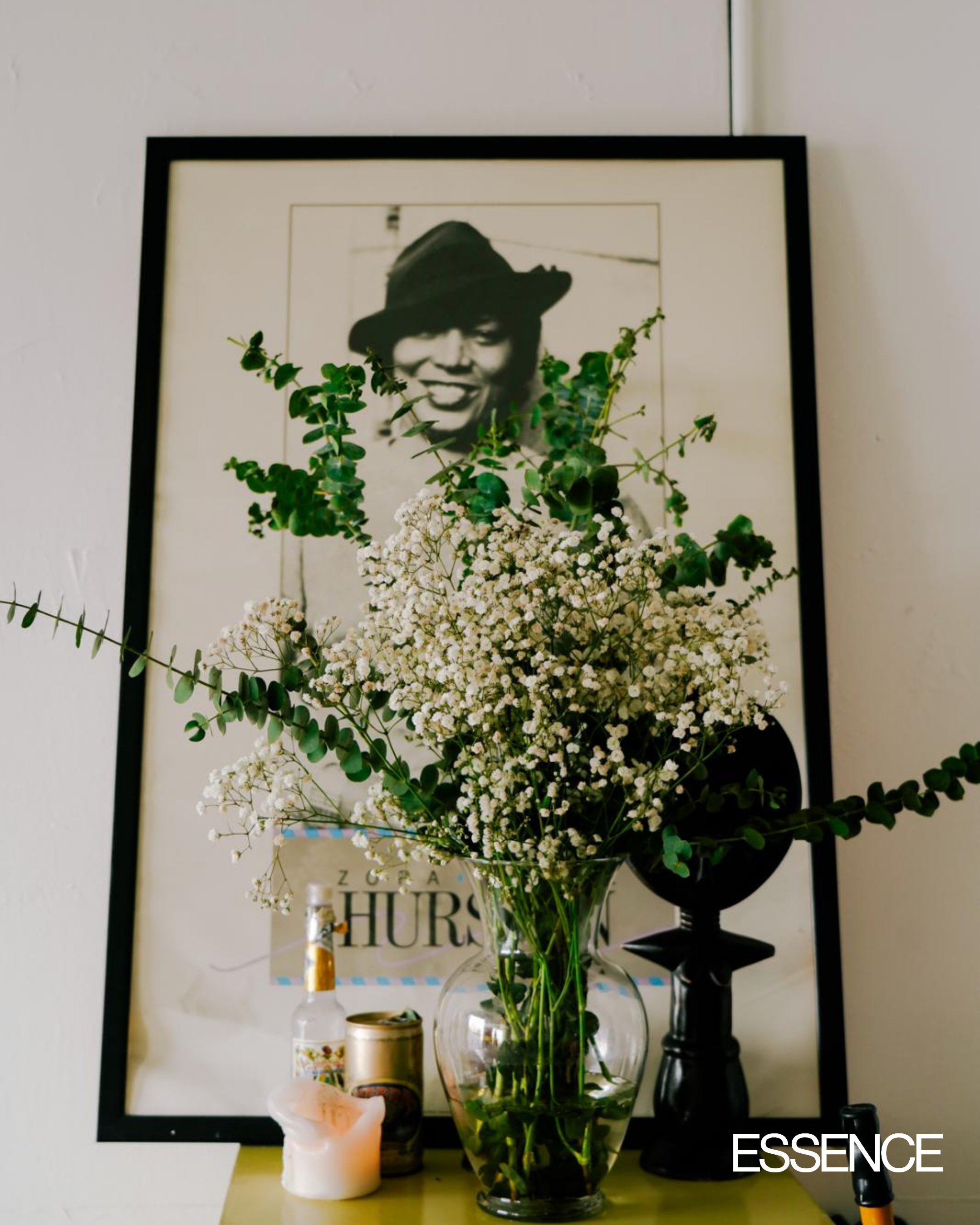
The work of the designers, crafting a sociopolitical narrative through clothing, can be likened to Black femme visual artists in other mediums. Julie Dash’s seminal film Daughters of the Dust similarly engages fashion and adornments as modes of subversive cultural identity, dressing historically inspired characters within its own specific context of Black heritage in the South Carolina Sea Islands. This on-screen world, not unlike the one audiences enter in House of Aama’s presentations, reconciles layered histories with almost Utopian ideals of identity, memory and tradition. Many garments encapsulate the haunting allure and poetic melancholy of the past, when generations of Black families were often most at home and yet the least safe, all at the same time.
In the 2017 “Bloodroot” collection, Edwardian blouses with high, lace-trimmed necklines and delicate satin buttons offer a neo-Gothic image of Black southernness. It is historically referential yet thematically current. That collection was released in a year of racial tensions in America, intensified by a then-president’s incendiary dog-whistles. The same autumn of the collection’s release, a mob of White nationalists in fear of the “Great Replacement” lie convened under a Confederate statue in Charlottesville, Virginia, singing “Dixie” renditions and chanting “Blood and Soil.” In that same time frame, the focused mother and daughter created their pieces without any such hatred in mind, instead exemplifying the very spirit of cultural triumph that antagonizers feared most.
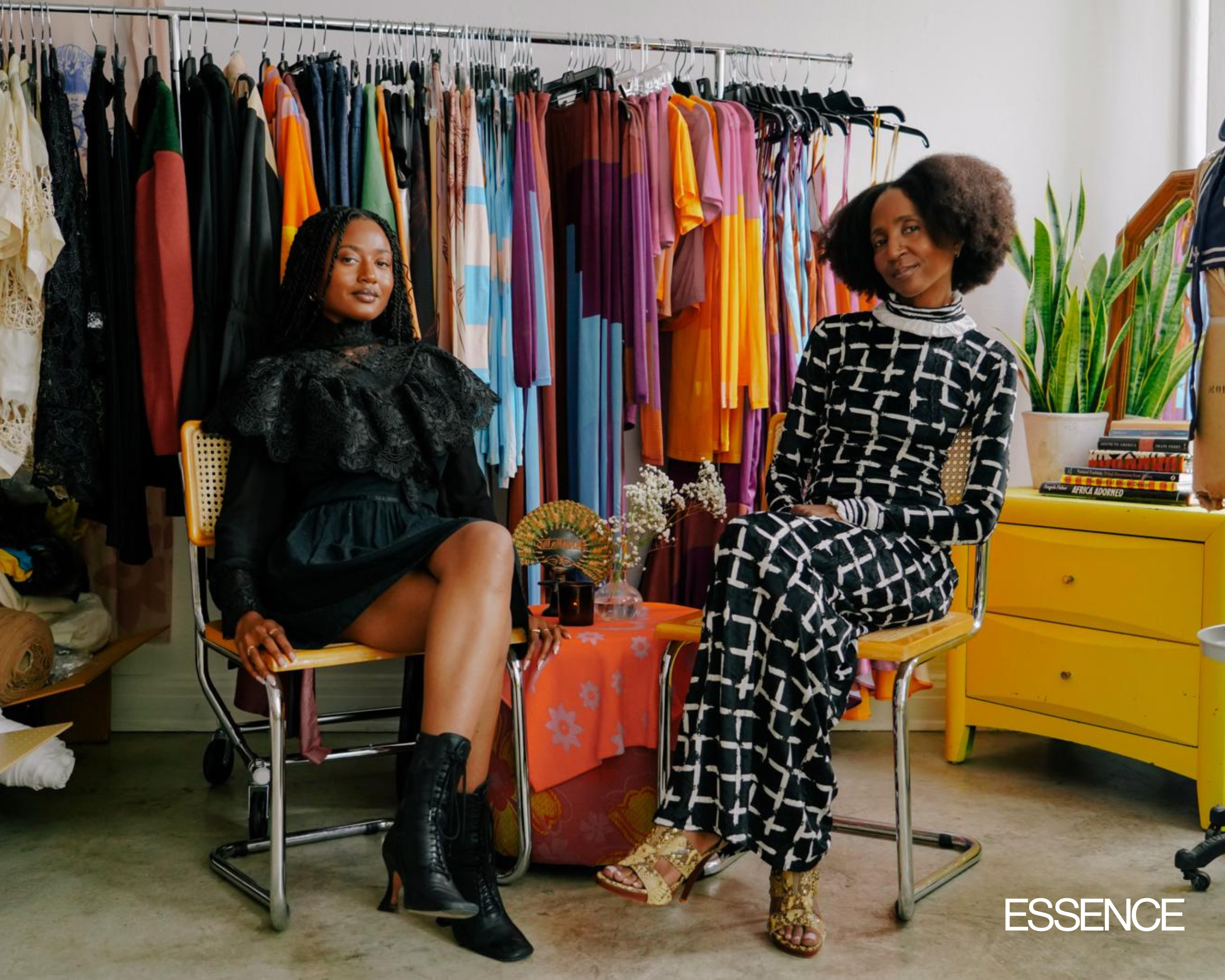
In an interview Shabaka gave to the now defunct Gal-Dem, a U.K. publication for women and non-binary people of color, she articulated the relevance and thematic focus of the work, which was widely lauded for its complimentary use of color and its seamless blend of traditional craftsmanship with contemporary aesthetics. “Bloodroot is a rare herb used by old-time conjures and rootworkers as a powerful guardian for the family,” she explained to writer Niellah Arboine.
Like jazz itself, Rebecca Henry, Akua Shabaka and House of Aama are children of the same meditation on expansive Black connectivity, pursuing a body of work that can withstand an unknown future. The label’s pieces provide a glimpse into the Shabaka and Henry family tree—and the designers’ countercultural engagement with African-American aesthetic practice and the American heritage brand. As for what is next, Shabaka and Henry are continuing to communicate with each other with intention and vision, in a way that only the mother and daughter can truly understand. As designers, they are each walking in the steps of a profound familial mission, just like their mothers and fathers before them.
This story originally appeared in July/August 2024 issue of ESSENCE magazine, on newsstands June 25.







